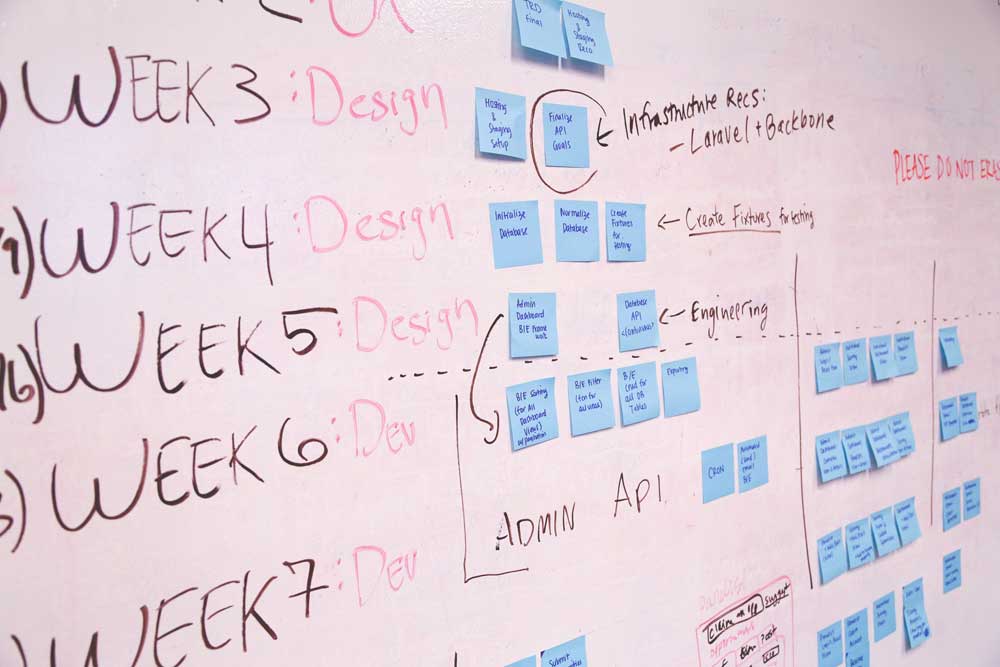Agile has revolutionized the software development life cycle, making it faster and more efficient. Awesome, right? We’re big fans of the Agile QA process. But if used incorrectly, it can actually slow things down. So how do you make sure your development process is optimized for QA?
What is Agile?
Agile is a process that (unlike Waterfall) delivers functionality updates regularly. It’s common for releases to happen every few weeks with an Agile process.
For example, you may have noticed that apps like Spotify and Starbucks often have new updates in the App Store or Play Store. If you look at the release notes, you’ll see new features or bug fixes that are in the update.
The Agile QA process can be challenging, as it means having lots to test in a short amount of time. QA has to test existing functionality, new features, bug fixes, data, and even more depending on the type of website or mobile app.
Manual vs. Automated Agile QA
If manual testing is the only defense against bugs, Agile can be an even bigger undertaking. That’s why it’s a best practice to have both manual and automated testing in an Agile QA process. Even if you only have automation for a handful of test cases, it can still make a big difference. Additionally, if the QA team is not included in planning activities, or if the QA-to-developer ratio isn’t optimal, there can be pretty significant consequences. But if the team incorporates some common sense strategies, these issues can be minimized — and in many cases, eliminated completely.
(If you want to know more about what type of QA is right for your situation, see our guide, What Type of QA Testing Do You Need?)
What are the Principles of the Agile Manifesto?
Satisfy the Customer Through Early & Continuous Delivery of Useful Software
There’s a lot to unpack here — above all, satisfying the customer. A client or user is not going to be satisfied if a release is riddled with bugs, which further reinforces the importance of QA. (If you’re a B2B company like a digital agency, you might even have multiple levels of “customers” to satisfy!)
 The second point emphasizes early and continuous delivery. For this to be an ongoing success, the process itself needs to be on point. Ideally, this means QA would weigh in from the planning phase through delivery. By following this process, even if issues come up during development, release risks can be addressed.
The second point emphasizes early and continuous delivery. For this to be an ongoing success, the process itself needs to be on point. Ideally, this means QA would weigh in from the planning phase through delivery. By following this process, even if issues come up during development, release risks can be addressed.
Product managers can then make adjustments to scope in order to meet the release date. They can also put out any other fires when they come up — instead of waiting until the last two days of the sprint. (This can also be helped by including QA in Sprint Planning.)
The third part mentions useful software. It’s always helpful to keep the “quality over quantity” mantra in mind when it comes to value. Each sprint can only fit so many story points, both from a development and QA standpoint. Adding three new features at a time feels great. But sometimes, it can add more value to focus on rolling out one eye-popping feature instead. And with continuous delivery, if the quality is at risk, you can always release another feature just two weeks later.
Welcome Changing Requirements, Even Late in the Development Process
The Agile process is all about taking advantage of change. For example, let’s say you find out new information about your target audience. Or maybe you get feedback that a new feature isn’t as impressive in action as it seemed in planning. With Agile, you can pivot on the fly! A good QA team is a big part of this, by actively weighing in on user experience. The QA team can find issues that you can address before a user complains or abandons the product.
 Business People and Engineering Should Work Together
Business People and Engineering Should Work Together
When you take product managers and developers/QA and put them together, the result can be greater than the sum of its parts. After all, each side has a unique perspective. By working together, the business and development teams can provide the best of both worlds. This helps everyone feel heard, and improves both the process and the product itself.
Agile can and should be a way to make your software development process (and resulting site or app) powerful and efficient, as long as it’s done correctly. Following the above steps, you can make the most of an Agile QA process.
Agile QA Services
Need help optimizing or implementing an Agile QA process? We do Agile consulting and Agile testing services, and we’re here for you. If you have some issues with your current system, it’s never too late to make changes — this is Agile, after all!

